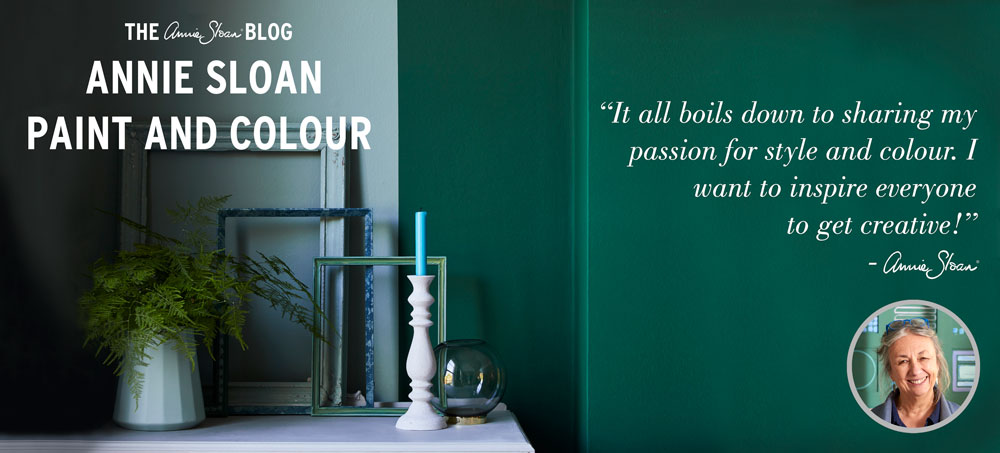I love potato printing as a technique because anybody can cut shapes as I did on this cabinet (above).
You
don’t have to be able to draw, and I find that empowering – and isn’t that what my paint and products are all about? I’m much more interested in seeking people’s
creativity especially those who feel or think they can’t draw – but in
fact anyone can achieve a finish like this.
I printed this old cabinet
a very long time ago – and it was old and shabby when I bought it in the mid
1990s! But I like the results: the top drawer has been worn away through
constant family use and it’s been in each house we’ve owned for keeping gloves,
keys, all sorts of things. So it has a sentimental value too.
Wonky work out
I did a rough concept of
what I want to achieve but nothing exact – it’s all rather wonky but that’s its charm. I was aiming for a parallel design but something organic and fairly
loose – not uniformly designed, and anyway that just won’t happen with this
technique.
With potato (or carrot or
cork, other good printing ‘tools’) you need to create some simple shapes– you
can’t do anything very fussy because it ends up looking silly. These particular
motifs turned into something African, tribal, aboriginal, it wasn’t intended –
this effect is also partly to do with the colours I chose.
The small print
So here’s how I did it:
1. I painted the whole cabinet using Chalk Paint® in Primer Red and left it to dry.
2. The inside I painted using Chalk Paint® in Duck Egg Blue to add
contrast.
3. Then I added a third Chalk Paint® colour - Aubusson Blue - over
the cupboard and drawer surrounds and legs.
4. Next I painted Yellow Ochre (a colour no
longer in the Chalk Paint® palette, but you could try Old Ochre here instead) on the drawer and insets.
5. I cut the potatoes in half with a kitchen knife
(un-serrated) and got rid of the residual water by dabbing the exposed
inside because a lot of water comes out.
6. I then drew a shape on the exposed inside of
the potato using a felt tip pen (below left).
7. Next I cut around the shape/outline using a
knife to leave a relief (or raised area, below right).
8. I then put my potato halves on a tray of
paint, dabbed some blobs of Chalk Paint® in Primer Red and transfer them – oomph –
directly on to the cabinet surface.
9. Then I waxed lightly with my Clear Soft Wax.
10. And finally I rubbed back to give a more
distressed feel.

This cabinet also featured in one of my earlier books How To Paint Furniture (1995) now out of print. Today the cabinet is still in use standing proud in our Oxford home after all these years – and with its original wax.
If you would like to try your hand on another potato printing project, check out my more recent Quick and Easy Paint Transformations (CICO Books, 2010), the cover of which shows a side table polka dot potato print, and inside how to achieve this finish.
Go on unleash the inner artist in you!
























